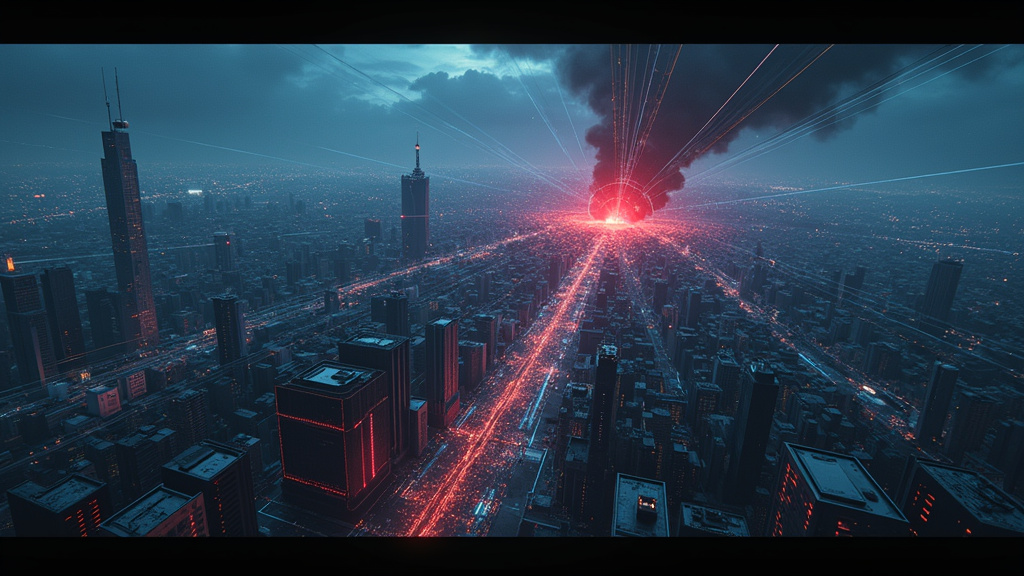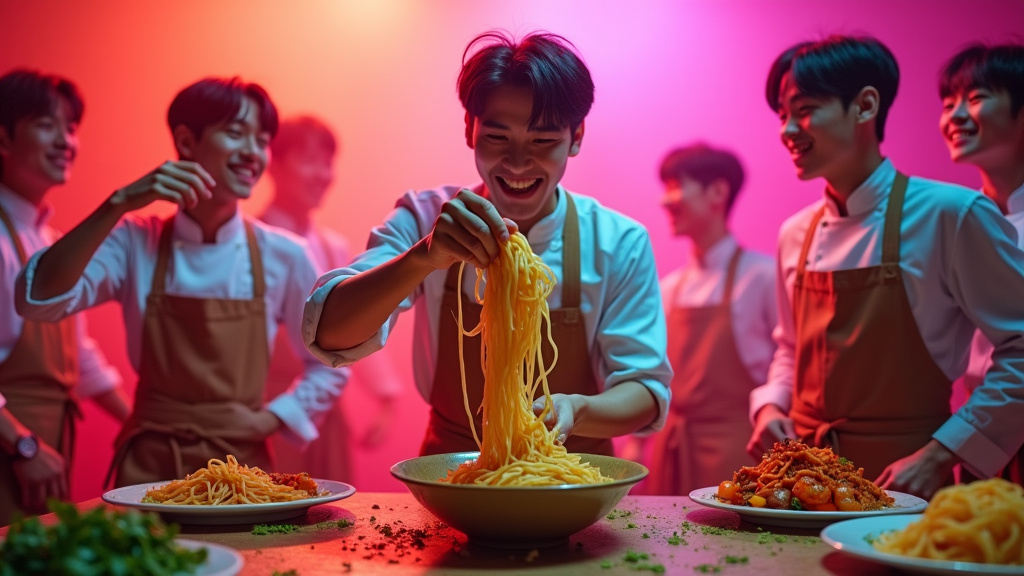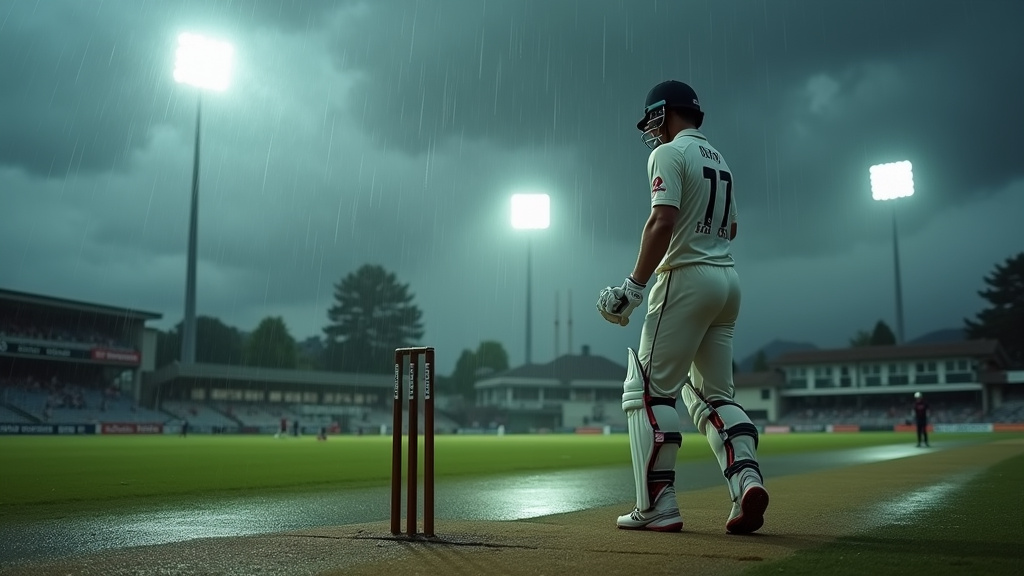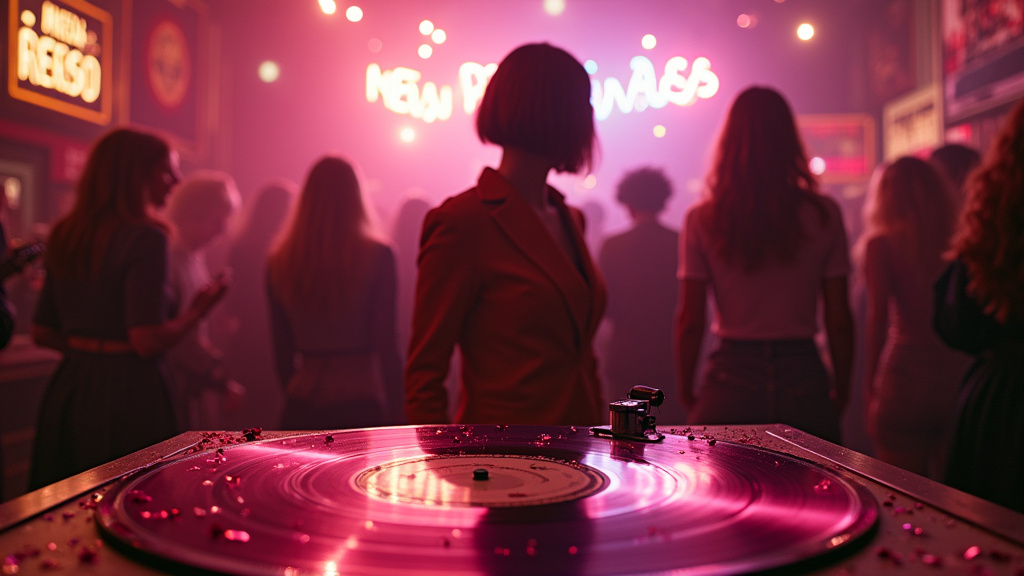Music and fashion have always shared a deep, symbiotic relationship, influencing each other in ways that transcend mere aesthetics. From the rock ‘n’ roll rebellion of the 1950s to the hip-hop revolution of the 1990s, and the indie resurgence of the 2000s, musicians have been at the forefront of fashion trends, shaping and redefining the way we dress. This article delves into the profound impact of music on fashion, tracing its evolution through various genres and eras.
The Rock ‘n’ Roll Era: Leather Jackets and Denim
The 1950s and 1960s were dominated by the rock ‘n’ roll phenomenon. Artists like Elvis Presley and The Beatles not only revolutionized music but also left an indelible mark on fashion. Elvis, with his slicked-back hair, leather jackets, and denim, epitomized the rebellious spirit of rock ‘n’ roll. His style was a bold statement against the conservative fashion of the time, influencing countless fans to adopt similar looks.
The Beatles, on the other hand, started with leather jackets and mop-top haircuts before transitioning to the mod style of tailored suits and Chelsea boots. This evolution showcased their growing influence, as their fashion choices became just as iconic as their music.
The Psychedelic 70s: Bohemian Rhapsody
The 1970s saw the rise of psychedelic rock and the corresponding bohemian fashion. Bands like The Rolling Stones and Led Zeppelin, along with artists like David Bowie, embraced flamboyant and androgynous styles. The era was characterized by bell-bottoms, paisley prints, and an overall eclectic mix of vibrant colors and patterns.
David Bowie, with his Ziggy Stardust persona, pushed the boundaries of fashion with his futuristic, glam-rock outfits. His influence extended beyond music fans, inspiring designers and fashion houses to explore more avant-garde styles.
Punk Rock and the DIY Aesthetic
The late 1970s and early 1980s witnessed the emergence of punk rock, a genre that brought a raw, DIY approach to fashion. Bands like The Sex Pistols and The Ramones embodied the anti-establishment ethos of punk through their ripped clothing, safety pins, and leather jackets. Vivienne Westwood, a pioneering fashion designer, collaborated with The Sex Pistols, creating iconic punk fashion pieces that became synonymous with the movement.
Punk fashion was more than just a style; it was a statement. It challenged the status quo, encouraging individuality and rebellion against mainstream norms. This influence is still evident today, with punk elements regularly resurfacing in contemporary fashion.
Hip-Hop’s Golden Era: Street Style and Luxury
The 1980s and 1990s marked the golden era of hip-hop, which brought a distinct street style to the forefront of fashion. Artists like Run-DMC, LL Cool J, and Tupac Shakur popularized baggy jeans, oversized shirts, and sneakers. Run-DMC’s love for Adidas tracksuits and shell-toe sneakers even led to a historic endorsement deal with the brand, highlighting the commercial potential of music-influenced fashion.
As hip-hop evolved, so did its fashion. The 1990s saw the emergence of luxury streetwear, with artists like Notorious B.I.G. and Jay-Z flaunting designer brands like Versace and Gucci. This blend of street style and high fashion created a new paradigm, where exclusivity and urban culture intertwined seamlessly.
The Indie and Alternative Revival
The 2000s and 2010s brought a revival of indie and alternative music, with bands like The Strokes, Arctic Monkeys, and Florence and the Machine influencing fashion trends. Indie fashion often embraced a vintage aesthetic, characterized by skinny jeans, leather jackets, and thrift store finds. This era also saw a resurgence of the bohemian style, with flowing dresses, fringe, and floral prints becoming popular again.
Florence Welch, of Florence and the Machine, became a fashion icon with her ethereal, bohemian style, often featuring flowing gowns and intricate headpieces. Her look inspired a wave of festival fashion, emphasizing a free-spirited, eclectic approach to dressing.
Pop Icons and Their Fashion Footprint
Pop music has always had a significant impact on fashion, with artists like Madonna, Michael Jackson, and Lady Gaga setting trends with their bold and often provocative styles. Madonna’s chameleon-like approach to fashion in the 1980s and 1990s, from her “Material Girl” glamour to her “Like a Virgin” punk-inspired looks, showcased the power of reinvention and self-expression.
Michael Jackson’s signature style, including his iconic military jackets, sequined gloves, and fedora hats, left a lasting legacy in the fashion world. Lady Gaga, known for her avant-garde and sometimes shocking outfits, has pushed the boundaries of fashion, blurring the lines between performance art and style.
K-Pop: The Global Fashion Phenomenon
In recent years, K-pop has emerged as a global cultural force, significantly influencing fashion trends worldwide. Groups like BTS, BLACKPINK, and EXO are known for their meticulously crafted looks, which often feature a mix of streetwear, high fashion, and futuristic elements. The fashion choices of K-pop idols are closely followed by fans and have led to collaborations with major fashion brands.
BTS, for example, has worked with brands like Louis Vuitton, showcasing the growing intersection between K-pop and luxury fashion. The members’ individual styles, from edgy streetwear to elegant suits, highlight the diversity and innovation within K-pop fashion.
The Symbiosis of Music and Fashion
The relationship between music and fashion is a dynamic and evolving one, where each influences and inspires the other. Musicians use fashion to express their identity, make statements, and connect with their audience. In turn, fashion designers draw inspiration from the music scene, creating collections that reflect the spirit and energy of different genres.
Fashion shows often feature live music performances, and music videos serve as platforms for showcasing the latest fashion trends. This symbiosis extends to social media, where artists and influencers share their styles, creating a global dialogue around fashion and music.
Fashion Collaborations and Merchandising
One significant aspect of the music-fashion relationship is the rise of fashion collaborations and merchandising. Musicians today often launch their own fashion lines or collaborate with established brands to create unique collections. Kanye West’s Yeezy line with Adidas is a prime example of how a music artist can influence global fashion trends through a successful fashion collaboration.
Similarly, Rihanna’s Fenty line with LVMH has redefined the boundaries of luxury fashion, emphasizing inclusivity and diversity. These collaborations not only blur the lines between music and fashion but also open new avenues for creative expression and commercial success.
Merchandising has also become a crucial aspect of the music industry, with artists selling branded clothing and accessories to fans. Concert merchandise, including T-shirts, hoodies, and hats, often features unique designs that reflect the artist’s style and aesthetic. This not only provides fans with a tangible connection to their favorite musicians but also allows artists to extend their brand beyond music.
Music Festivals and Fashion Trends
Music festivals have become significant cultural events, showcasing not just musical talent but also the latest fashion trends. Festivals like Coachella, Glastonbury, and Lollapalooza are known for their unique fashion scenes, where attendees often don eclectic, bohemian, and avant-garde outfits. These festivals serve as platforms for fashion experimentation, influencing mainstream fashion trends.
Coachella, in particular, has become synonymous with festival fashion, featuring a blend of bohemian and edgy styles. Influencers and celebrities attend these events, showcasing the latest trends and often collaborating with fashion brands for exclusive festival collections. The festival scene highlights the vibrant and ever-evolving relationship between music and fashion, where creativity and self-expression are paramount.
The Future of Music and Fashion
As we look to the future, the relationship between music and fashion is likely to become even more intertwined. Advances in technology, including virtual reality and augmented reality, are creating new opportunities for music and fashion to intersect. Virtual concerts and digital fashion shows are becoming more common, allowing artists and designers to reach global audiences in innovative ways.
Moreover, sustainability is becoming a crucial focus in both music and fashion. Artists are increasingly using their platforms to advocate for sustainable practices, and fashion brands are responding with eco-friendly collections. This shift towards sustainability reflects a broader cultural movement towards conscious consumption, where music and fashion play key roles.
Conclusion
The influence of music on fashion is undeniable and ever-present. From the rebellious spirit of rock ‘n’ roll to the eclectic mix of modern K-pop, music continues to shape and redefine the way we dress. This relationship is a testament to the power of self-expression and creativity, reminding us that fashion is not just about clothes—it’s about making a statement, telling a story, and connecting with others.





